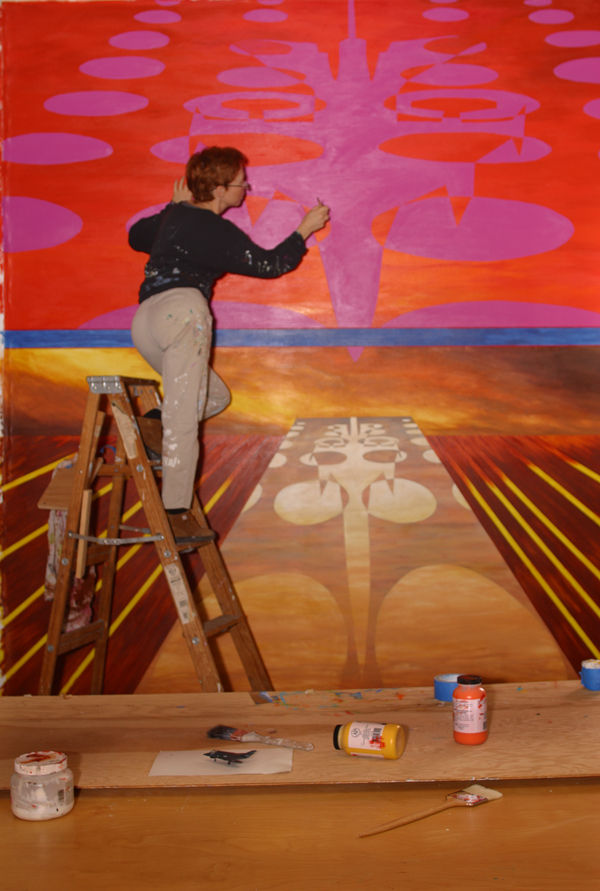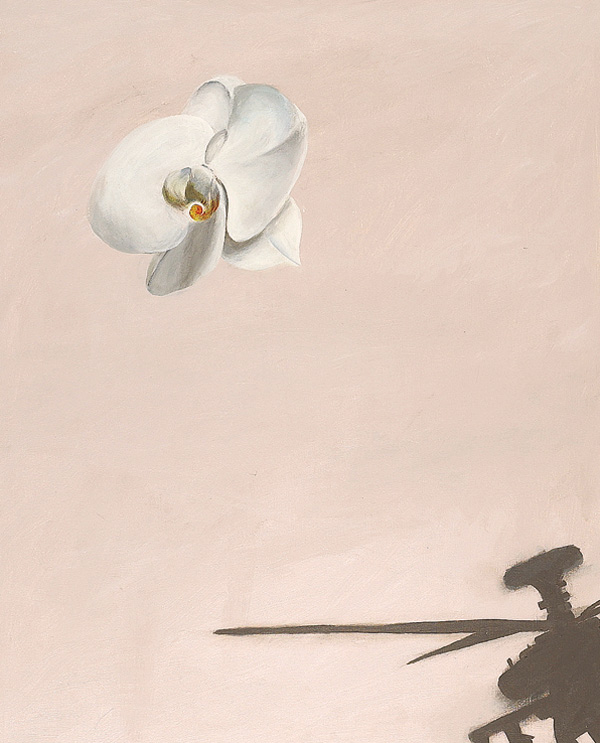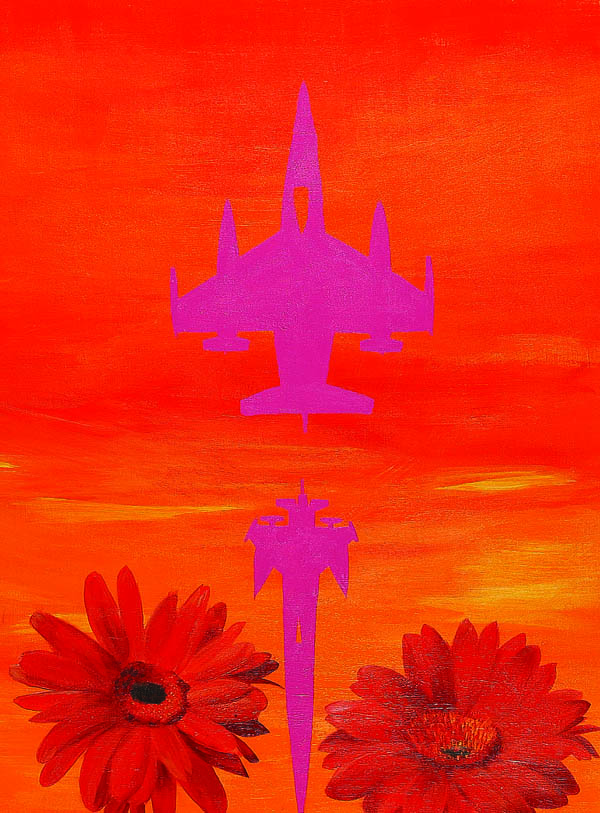I have selected the medium of painting versus digital or printing processes, because I want the works to retain a transcendent capacity. With a subtle amount of expressionistic ground, the work is kept from completely freezing up and closing upon itself. Geometric design presents both filled spaces and empty space. How do the circles, the ellipsis and flowers exist in space? Do they float meaninglessly? Do they remind us of our own abstract place and interchangeable position in modern society? Like the nature of our thought process, the interplay of signs and pattern allow us to absorb some information while missing or discarding camouflaged information. My intention with bright neo-pop color and design is to provide a collective-unconscious entry point for viewers who tend to be attracted to color. The smaller elements of military might inside the paintings are less perceptible. Ironically, the repeated floral or geometric patterns have strong roots in the aesthetic practice of particulars and arabesque motifs of Islamic design, at a time in our history when Islamic culture is so easily maligned in the public culture and the target of our weaponry.
In relation to the ideology of image, in this series of works, the question of aestheticizing politics seems fundamental. Walter Benjamin warns against it in his “Art in the Age of Mechanical Reproduction.” While Peter Gidal, who writes about Andy Warhol’s ‘extreme’ works, says that Warhol engages in just the opposite: politicizing the aesthetic. I am interested in the interplay of both directions of this dialectic relationship and I think both are at play throughout my work engaging discourses on the subject of war, violence and otherness.
Who Decides Who Gets to Di(n)e? II
(in progress/with artist at work)
acrylic on canvas
H. 110″ W. 106″
$17,000








